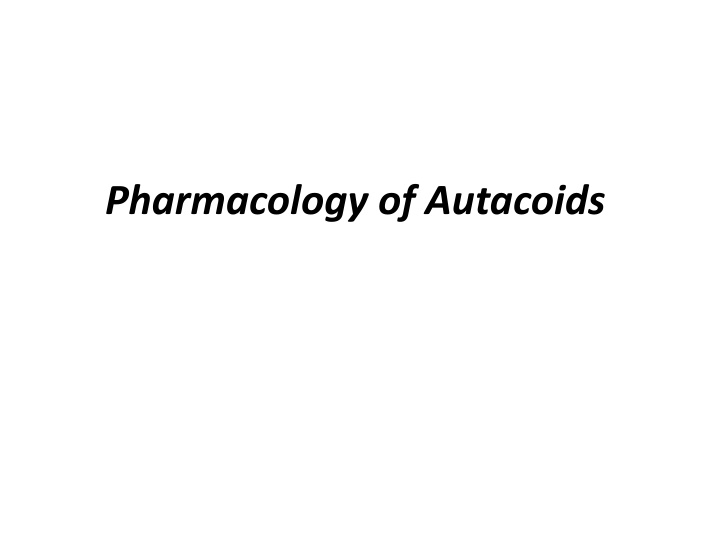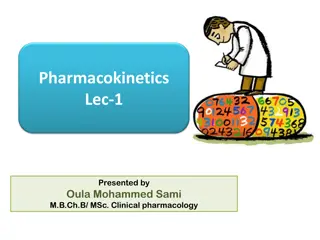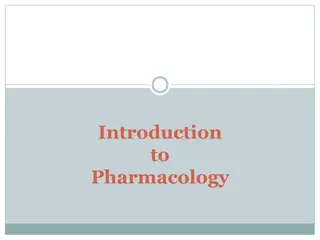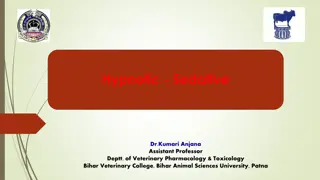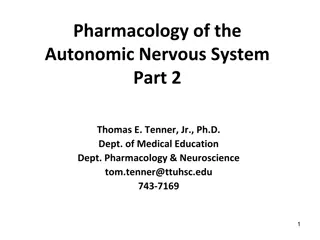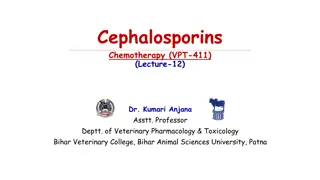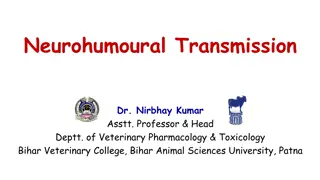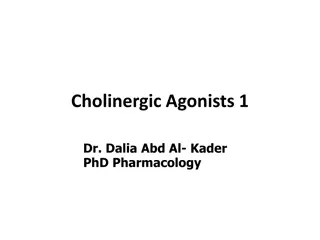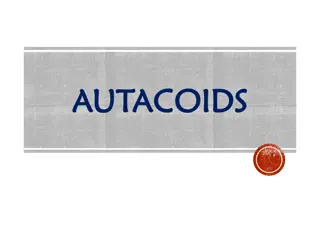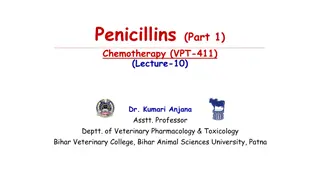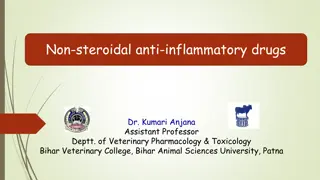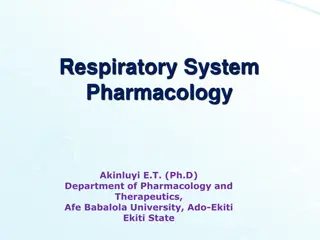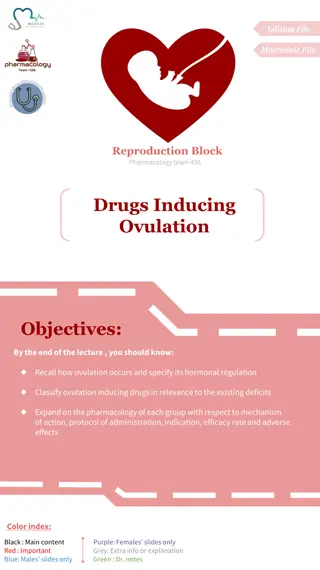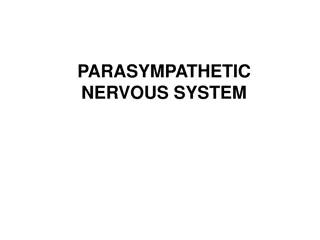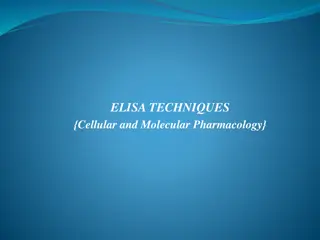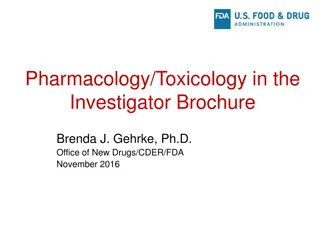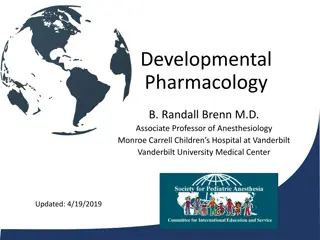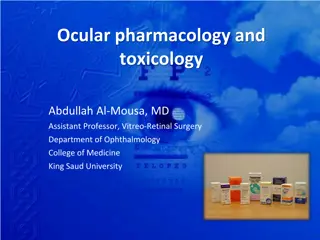Pharmacology of Autacoids
Autacoids are local hormones with a brief duration of action, playing a role in various pathological conditions. Histamine, a potent tissue amine, acts on receptors to produce multiple effects on different systems. Learn about its mechanisms of action, pharmacological actions, and agonists.
Uploaded on Mar 06, 2025 | 0 Views
Download Presentation

Please find below an Image/Link to download the presentation.
The content on the website is provided AS IS for your information and personal use only. It may not be sold, licensed, or shared on other websites without obtaining consent from the author.If you encounter any issues during the download, it is possible that the publisher has removed the file from their server.
You are allowed to download the files provided on this website for personal or commercial use, subject to the condition that they are used lawfully. All files are the property of their respective owners.
The content on the website is provided AS IS for your information and personal use only. It may not be sold, licensed, or shared on other websites without obtaining consent from the author.
E N D
Presentation Transcript
Autacoids are are biological factors which act like local hormones, have a brief duration, and act near the site of synthesis The word autacoids comes from the Greek "Autos" (self) and "Acos" (relief, i.e. drug).
any imbalance in autacoids synthesis , release pathological conditions such as inflammation , allergy ,hypersensitivity and ischemia. autacoids like Histamine , serotonin ,prostaglandins and leukotrines
Histamine Histamine : It is a potent tissue amine widely distributed in plant and animal tissues and in the venoms of bees . histamine is a basic amine formed from histidine . stored in mast cell and basophiles.
Mechanism of action Mechanism of action : Histamine produces effect by acting on H1,H2,H3 ( and possibly H4 ) receptors on target cells . A-Stimulation of H1 receptors results in smooth muscle contraction (gut intestinal muscle ,bronchi ) ,increased vascular permeability , and mucous production
B-Activation of H2 receptors increases gastric acid production , cardiac stimulation and this effect is blocked by blockers such as cimetidine
Pharmacological action 1-Cardiovasicular system . Histamine produces dilatation of capillaries and venules accompanied by fall in blood pressure . 2-Smooth muscles: Histamine directly stimulates the smooth muscles of bronchi and uterus.
3-Exocrine glands . It is powerful stimulant of HCL secretion by the gastric mucosa 4-CNS :Histamine is acting by increasing the sensitivity of large cerebral areas .
Histamine agonists : -histamine :histamine injection is used to diagnose skin allergy . -betazole is used to stimulate gastric acid secretion.
Histamine antagonist : antihistamines A-Ethylenediamine derivatives . B-Ethanolamine derivatives : (phenothiazines ) ; it also possesses antitussive activity . C-Phenothiazine derivatives : -Promethazine
E-Piperazine derivatives cyclizine and meclizine . CNS depressant effects. F-inhibitors of mast cell e.g. cromolyn sodium . antihistamines:e.g.- cimetidine -Ranitidine .
Serotonin (5 HT ) Serotonin (5-hydroxytriptamine or 5-HT ) is synthesized from the amino acid tryptophan . it is stored in the intestine , the CNS , and mast cells . it is also found concentrated in blood platelets.
Pharmacological action : -effects respiratory volume and rate , bronchoconstriction , increase in motility of small intestine , vasoconstriction , vasodilatation of skeletal muscle beds , stimulation of sensory nerves , can contribute to pain responses .
Serotonin agonists : -buspirone ,sumatriptan: Serotonin antagonists : alosetron , Fluoxetine , sibutramine.
Eicosanoids : The eicosanoids ( prostaglandins , thromboxane , prostacyclin and leukotrienes ) . are found in the organism from arachidonic acid .
Platelets : - inhibits platelets aggregation - is a platelet activator - chemotaxis of eosinophils , monocytes , neutrophils -prostaglandins inhibit cellular and humeral immunity
Lung : -prostaglandins have mixed effect on bronchial muscle - inhibitors of thromboxane reduce bronchoconstrictive response - and - potent bronchoconstrictors
Uterus : Prostaglandins cause uterine contraction in pregnancy , clinically used as abortifacients. GIT : - and - inhibits gastric acid secretion . maintenance of the gastric mucosa stimulation of mucus secretion . - and - increase renal blood flow
Plasma kinnins Bradykinin named for its ability to produce a slow (brady ) contraction of the gut . Pharmacological effects of kinnins : 1-plasma kinnins are the most potent vasodilator autacoids
2-large arteries and most veins are contracted by bradykinnin. 3-increase capillary permeability , produce edema . 4-involved in pain responses . 5-contract bronchioles
Inhibitors of cyclooxygenase : 1-non steroidal anti-inflammatory drugs (NSAIDS) 2-inhibit the production of eicosanoids by inhibiting cyclooxygenase . Common pharmacological actions of NSAIDS: -analgesia . anti-inflammatory inhibition of platelet aggregation- anti-pyretic
Other autacoids agent Nitric oxide : Have many various action in the body involved vasodilatation , activation immune system , stimulate sexual and performance of male and regulate female reproductive system and other works in the tissue of the body
